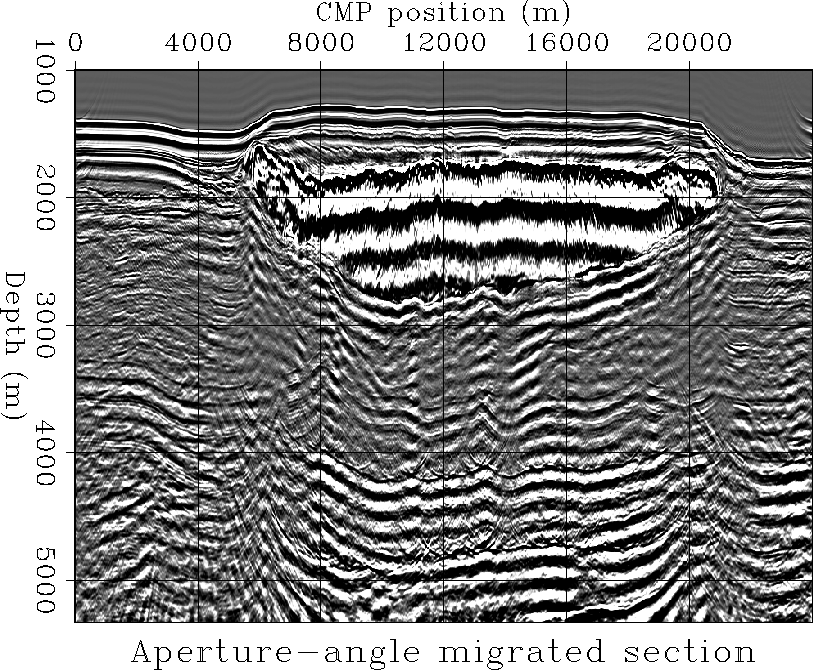




Next: Apex-shifted Radon Transform
Up: Alvarez et al.: Diffracted
Previous: Introduction
Figure 1 shows a stack over aperture-angle of a wave-equation
migrated 2D line from the
Gulf of Mexico over a large salt body. The presence of the salt creates
a host of multiples that obscure any genuine subsalt reflection.
Most multiples are surface-related peg-legs with a leg
related to the water bottom, shallow reflectors or the top of salt. Below
the edges of the salt
we also encounter diffracted multiples (e.g., CMP position
6000 m below 4000 m depth in Figure 1).
angle_stack
Figure 1 Angle stack of migrated ADCIGs of 2D
seismic line in the Gulf of Mexico. Notice that multiples below the
salt obscure any primary reflections.

Figure 2 shows four ADCIGs obtained with wave-equation
migration as described by Sava and Fomel 2003.
The top two ADCIGs correspond to lateral positions directly below the
left edge of the salt body (CMP positions 6744 m and 22056 m in
Figure 1). Notice how the apexes of the diffracted multiples
are shifted away from the zero aperture angle (e.g., the ``seagull''-looking
event at about 4600 m in panel (a)).
For comparison, the bottom panels in Figure 2 show two ADCIGs that do
not have diffracted multiples. Figure 2c corresponds to an ADCIG below
the sedimentary section (CMP 3040 m in Figure 1) and
Figure 2d to and ADCIG below the salt body (CMP position 12000
m in Figure 1). In these ADCIGs all the multiples are
specularly-reflected and thus have their apexes at zero aperture angle.
Notice also that although the data is
marine, the ADCIGs show positive and negative aperture angles. We used
reciprocity to simulate negative offsets and interpolation
to compute the two shortest-offset traces not present in the
original data. The offset gathers were then converted to angle gathers.
The purpose of having both positive and negative aperture angles is
to see more clearly the position of the apexes of the diffracted multiples.
cags
Figure 2 Angle domain common
image gathers. (a) under the left edge of the salt, CMP at 6744 m;
(b) under the right edge of the salt, CMP at 22056 m; (c) below the
sedimentary section, CMP at 3040; (d) below the salt body, CMP at 12000 m.






Next: Apex-shifted Radon Transform
Up: Alvarez et al.: Diffracted
Previous: Introduction
Stanford Exploration Project
5/23/2004


